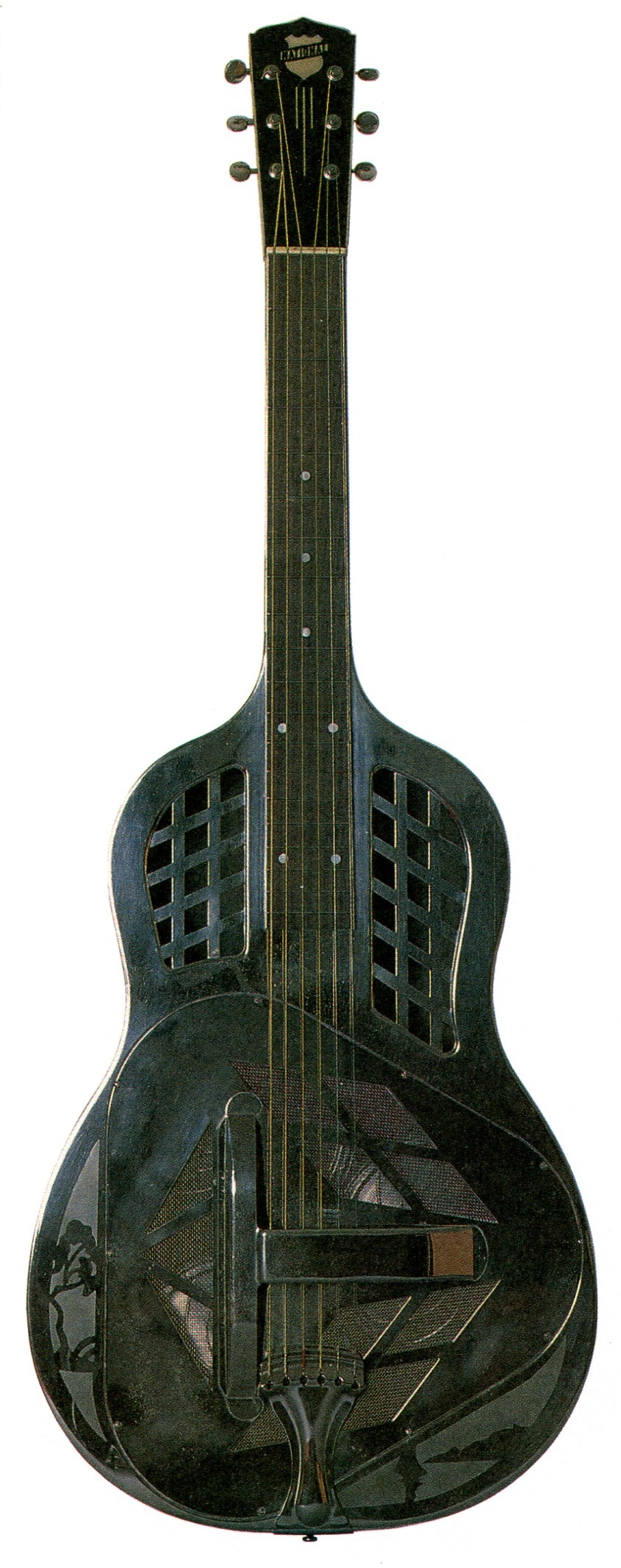National Model 35

At the height of the Jazz Age, guitarists had a pressing need for an instrument that could match the volume of a tenor banjo. To that end, Los Angeles instrument maker John Dopyera and vaudeville guitarist Gerorge Beauchamp teamed up to invent the resonator guitar.
Introduced under the National brand in 1927, these new instruments featured a metal body with three thin cones of spun aluminum that functioned much like the cone of a loudspeaker. The original “tri-cone” models (single-cone models were also available) featured nickel-alloy bodies, ornamented with floral-pattern engraving.
In 1936, a pair of less expensive tri-cones debuted with nickel-played brass-bodies and flashier, airbrushed enamel artwork on the back. Model 35 sported a Renaissance musician, while Model 97 had a Hawaiian surf rider.
The resonator guitar accomplished it’s goal of providing guitarists with a louder instrument but, by the late 1930s, the elctric guitar had eclipsed all acousics in the quest for volume, and National abandoned it’s resonator guitars in 1942.
